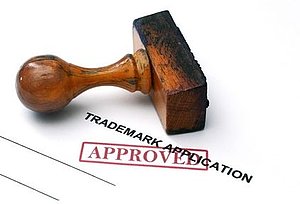Trademark Law
Trademark protection
Trademarks may be all signs allowing graphic representation, particularly words, including names of persons, figures, letters, numbers, as well as the form or the packing of the goods, so far as such signs are fit for distinguishing the goods or services of a company from those of any other companies. Here this is the clear definition of the target of a trademark: it has a designating function, thus it has to make identifiable certain goods or services for the relevant commercial circle. The business partner or consumer should reasonably connect with a trademark a certain product or an undertaking.
At the same time trademark law provides for the trademark owner the exclusive right to prohibit third parties using, without his or her consent, a sign identical or similar to the trademark in business dealings for same or similar goods or services. Not only the use of an identical trademark shall be prohibited for identical goods or services, it may be sufficient already a similarity between two trademarks in order to presume the infringement of trademark protection, if the likeliness of confusion exists already in respect of the market segments concerned.
Trademark protection has not only substantial components, whereby it covers certain goods or services, but also a geographical component. Trademark protection is bound to countries, where the Community trademark offers trademark protection in all member states of the European Union (“EU Trademark”).
Trademark Application

Acquisition of a title in and to a trademark requires entry in the trademark register (trademark application). Here you have to make first of all the decision, in which country or in which countries you would claim trademark protection. Distinction should be made between
- national trademark
- European trademark
- international Trademark (international extension of trademark protection).
The applicant must opt in each case for a word trademark, word-picture trademark or picture trademark, depending on the desired scope of protection. It is, however, also possible to apply for a tone as tone trademark or even for a certain colour as colour trademark, depending on the possibility of graphical representation in case of these latter types.
Upon the trademark application it is in general to be taken into consideration that such application is made in accordance with the principle of priority. Should two identical trademarks be applied for, the priority shall be determined by the arrival of the application. If a trademark application is successful and the trademark will be registered, the trademark owner shall have a claim for the scope of protection as described above and he or she can raise an objection against a trademark application or he or she may even submit an application for the cancellation of trademark.
Trademark Management
Efficient trademark protection shall require ongoing servicing and surveillance of trademark titles. The trademark owner can be sure only this way that his or her title in and to a trademark will remain strong. He or she must take care, in his or her own interest, that such trademark should not be unlawfully applied and that no identical trademarks or trademarks subject to confusion should be applied for by other people. Should this occur, he or she must take the initiative and take the necessary legal steps in order to avert the trademark abuse through the unlawful use of the trademark.
These measures can have various forms. First it is possible to file an objection against a Trademark in the framework of trademark objection proceedings within 3 months, if the complainant is owner of a registered trademark with older priority and there is a risk of confusability. If no objection has been made and the trademark is registered, a motion for the cancellation of the trademark should be considered.
If no trademark had been registered by an opponent and the use of your own trademark is recognized – for instance via keyword advertising – unlawfully, the trademark owner shall have a claim for discontinuance, fair licence fee and publication of the judgment. These claims may be enforced via demand notes specified by trademark law. Should such demand note fail to succeed, the trademark owner injured in his or her rights may advance a claim and combine this potentially with interim injunction.
This way the ongoing trademark surveillance and trademark management guarantee the best possible trademark protection.




